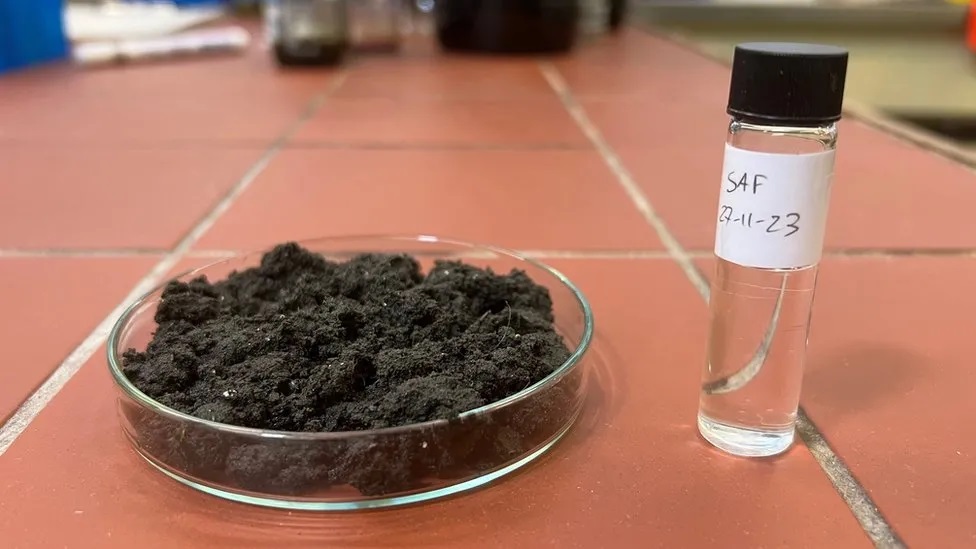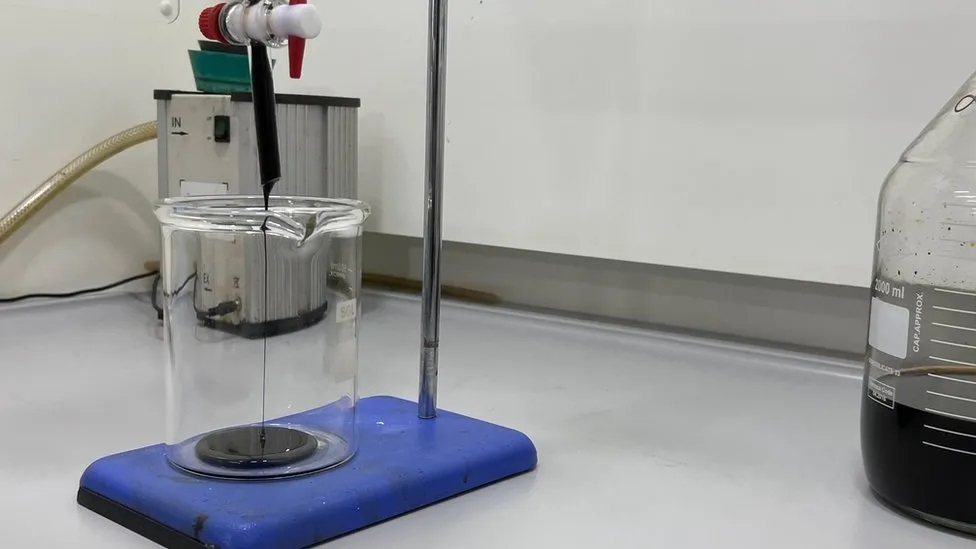A brand-new aviation company has created a jet fuel that is completely composed of human waste
James Hygate, Firefly Green Fuels CEO, said: “We wanted to find a really low-value feedstock that was highly abundant. And of course, poo is abundant.”
According to this article, independent testing conducted by international aviation authorities revealed that this fuel was almost the same as regular fossil-fuel jet fuel. The Firefly team examined the fuel’s life-cycle carbon impact in collaboration with Cranfield University. It was determined that the carbon footprint of Firefly’s fuel is 90% less than that of regular jet fuel.


Despite being chemically identical to fossil-based kerosene, Mr. Hygate, who has spent 20 years exploring low-carbon fuels in Gloucestershire, said the new fuel “has no fossil carbon; it’s a fossil-free fuel.“
“Of course, energy would be used (in production), but when looking at the fuel’s life cycle, a 90% saving is mind-blowing, so yes, we have to use energy, but it is much lower compared to the production of fossil fuels,” he added.
Flying is responsible for about 2% of the world’s carbon emissions, resulting in climate change. Even though it is a tiny portion, it is expanding quickly. Eliminating carbon from aviation is among the most difficult tasks. Electric planes are being developed, with a company in the Cotswolds promising hydrogen-electric-powered flights for a dozen passengers by 2026.
However, it may take years or even decades before entirely new technologies are used to power mass air travel. It has thus become a global gold rush to discover new, cleaner ways to produce kerosene without employing fossil fuels.
Twenty years ago, Mr. Hygate started producing “bio-diesel” for cars and trucks using rapeseed oil on a small farm in Gloucestershire. His company, Green Fuels, currently serves clients worldwide and offers equipment for converting cooking oil into biodiesel.
He then began searching for ways to produce green jet fuel. They experimented with leftover food, oil, and even farm garbage. They then used human waste in their experiments. He collaborated with Dr. Sergio Lima, a chemist from Imperial College in London, to create a method that turns poop into energy.
First, they create what they call “bio-crude”. It appears gloopy, viscous, and black like oil. Above all, chemically, it behaves just like crude oil. In addition to being Firefly Green Fuels’ research director, Dr. Lima stated, “What we are producing here is a fuel which is net zero.”
Dr. Lima was thrilled to see the outcomes at first.
“This is so exciting because it was produced from a sustainable feedstock, to which all of us are contributing.”
The scientist’s lab included a miniature replica of the huge fractional distillation columns that rise over oil refineries. His one functions in the same way. After heating the liquid, the gases are extracted at certain temperatures to get the proper “cut” for various fuels. A new clear liquid fills the collection pipes drop by drop.
“This is our biofuel,” he says with a smile. “Seeing the final fuel is something amazing.”
In collaboration with Washington State University, the DLR Institute of Combustion Technology at the German Aerospace Center is currently conducting independent testing of the bio-kerosene.
The UK SAF (Sustainable Aviation Fuels) clearing house, located at the University of Sheffield, will also conduct additional testing in the future. According to the initial findings, the fuel’s chemical makeup is almost the same as that of A1 fossil jet fuel. The group has been given a £2 million research grant by the UK Department of Transport for the lab to produce kerosene in a test tube. That’s a long way from kerosene being the standard in airports across the world.
He estimates that every person generates enough sewage annually to make four to five liters of bio-jet fuel.
The yearly sewage of 10,000 people would be required to operate a passenger jet from London to New York. And there are ten thousand more to return. Said another way, the whole sewage supply of the United Kingdom could cover roughly 5% of the nation’s total aviation fuel use.
It may sound small, but he insists, “That’s pretty exciting.”
“There’s a 10% sustainable aviation fuel requirement; that’s a legal mandate. And we could meet half of that with poo.”
Sustainable Aviation Fuels are fuels derived from waste oils, corn oils, or other non-fossil sources. Experts estimate that this represents an 80–90% reduction in carbon emissions from fossil fuels, even if the aircraft emits the same amount of carbon dioxide since the plants used to produce the oil collected CO2 throughout their growth.
Environmental activists argue that rather than using crops to produce jet fuel, people should simply fly less and use them for food or energy. They are more in favor of sewage-based fuel because, in the words of Cait Hewitt, policy director of the Aviation Environment Federation, “human waste is perhaps the one form of rubbish that society really can’t avoid producing”.
Still, according to the International Energy Agency, sustainable aviation fuels are “critical to decarbonizing aviation”.
Sir Richard Branson recently made a flight from London to New York using fuel made from waste oils and corn waste products to demonstrate what is feasible.
However, hardly 0.1% of aviation fuel is “sustainable” at this time. In contrast, Mr. Hygate’s 5% aim seems rather lofty. Furthermore, he is making use of a universal feedstock that no one else wants.
“Although it’s been developed here in the southwest of the UK,” he says, “it’s a global opportunity”.
The company seeks funds to construct a large-scale demonstrator factory in the UK. Mr. Hygate explained, saying, “The opportunities in very populous cities are enormous. The amount of fuel we can create is huge.”

